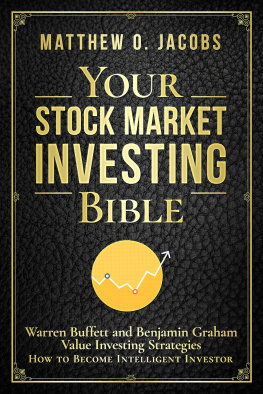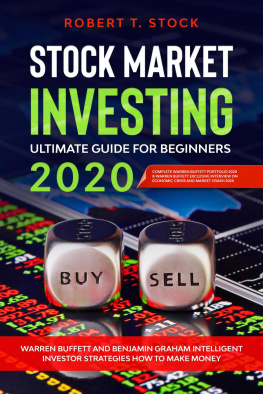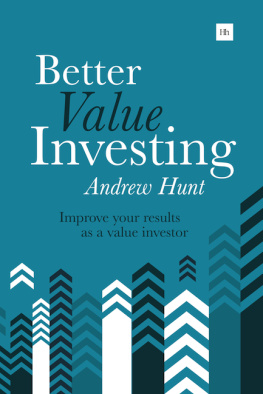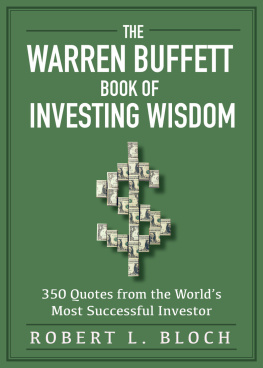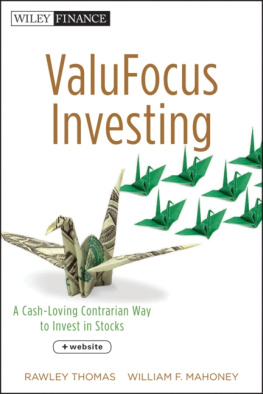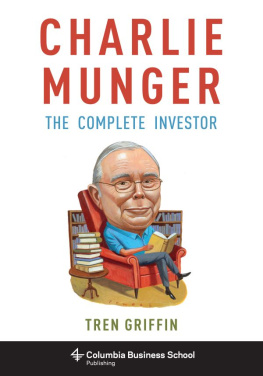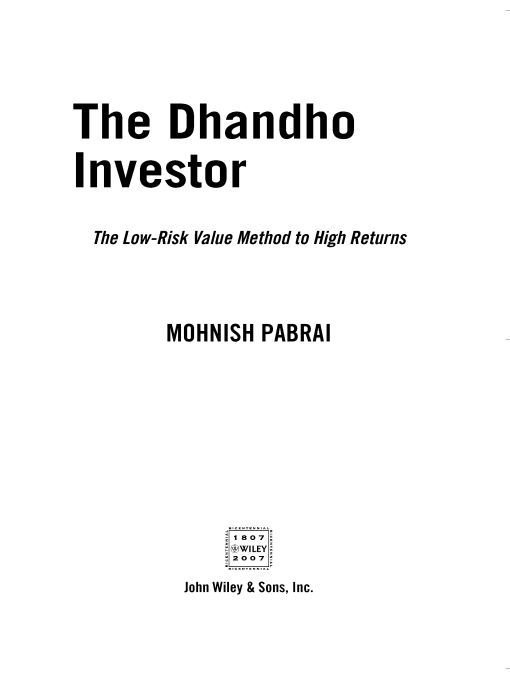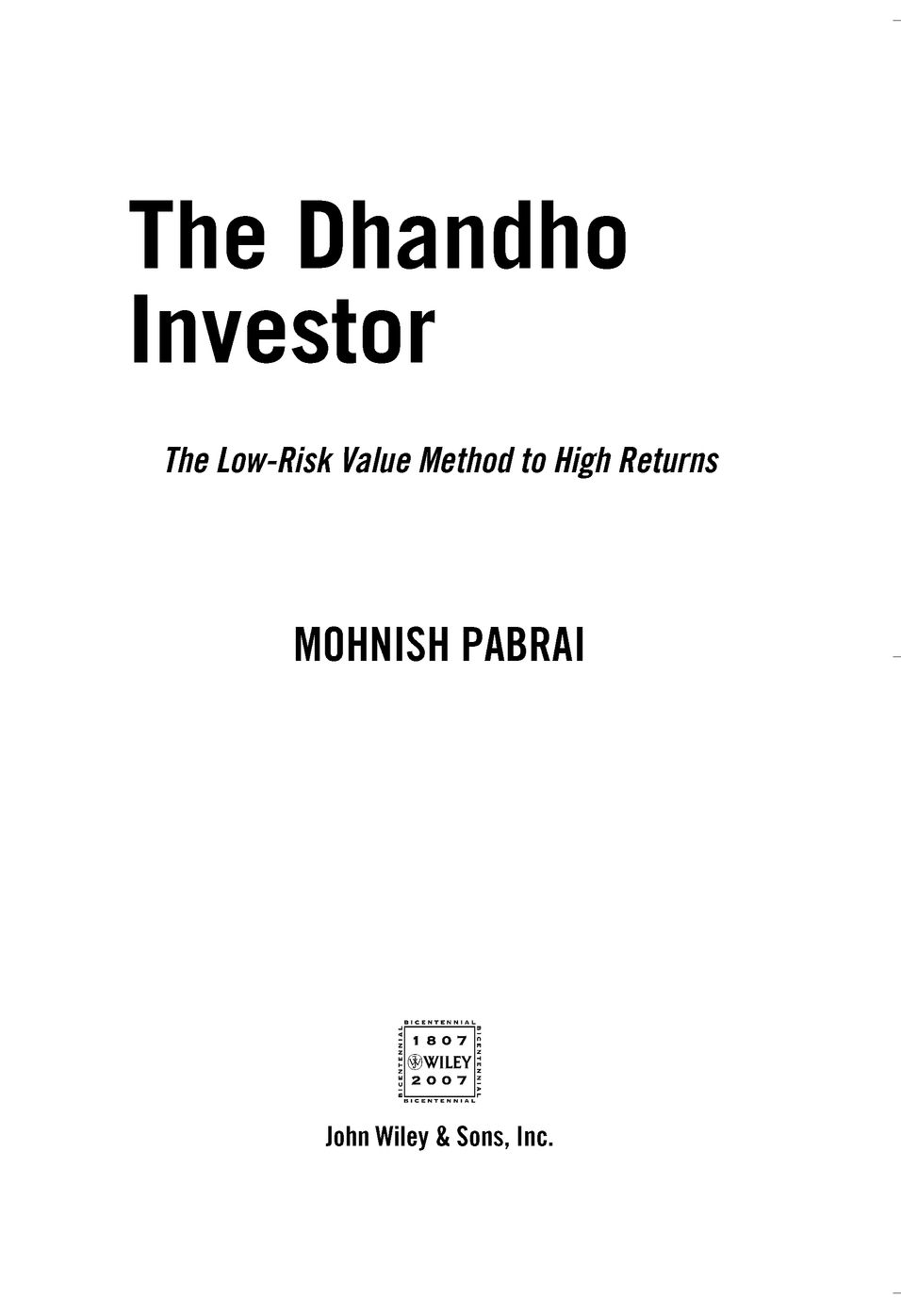Table of Contents
To my three gurus, Warren Buffett,
Charlie Munger, and Om Pabrai
ACKNOWLEDGMENTS
This book, The Dhandho Investor, is a synthesis of ideas Ive encountered in my readings, interactions with friends, and various experiences, both visceral and direct. I have very few original ideas. Virtually everything has been lifted from somewhere.
If there wasnt a Warren Buffett, there wouldnt be a Pabrai Funds and there certainly wouldnt be this book. It is hard for me to overstate the influence Warren Buffett and Charlie Munger have had on my thinking. Their perspectives have, in one way or another, shaped virtually every page. I can never repay my debt to them for selflessly sharing priceless wisdom over the decades. Thank you, Warren and Charlie.
I am grateful to my dear friend Pat Fitzgerald and his daughter Michelle for suggesting that I consider writing this book. It wasnt on my to-do list. I appreciate their persistence and encouragement. Michelle took a close personal interest in this project and I am thankful for all her efforts. Id also like to thank my editor at Wiley, Debra Englander, for all her excellent suggestions. Everyone at Wiley was a pleasure to work with, including Greg Friedman and Christina Verigan.
My forum mates in the Young Presidents Organization (YPO) were with me every step of the way. Thanks are due to Terry Adams, Andy Graham, Dave House, Michael Maas, Mark Moses, Jay Reid, and Ryan Rieches. Over the past nine years, YPO has been a wonderful life-altering experience for me. If I wasnt a part of YPO, it is unlikely there would have been a Pabrai Funds or this book. It is impossible to give more than you get from YPO, and I shall forever be indebted to YPO. It is an amazing organization.
I first heard the term Dhandho from my college roommate, Ajay Desai. We lost touch with each other for about a decade and were both delighted to find each other and rekindle our wonderful Dhandho conversations. Thank you, Ajay.
My wonderful office manager at Pabrai Funds, Isabelle Secor, and Marybeth Nagy of Source4 did a wonderful job of editing the manuscript. Thanks, Marybeth and Isabelle. Thanks to Whitney Tilson for all of his editing suggestions. My friend Shai Dardashti encouraged me to include the comments on giving back that are so important. Thanks, Shai. My good friend and neighbor Samir Doshi introduced me to Manilal Chaudhuri and paved the way for the Manilal interview. And thanks are due to Manilal for taking time out of his busy schedule for our meeting and discussion.
My daughters, Monsoon and Momachi, have been excited and supportive of the book since the outset. I wrote it keeping them and their future kids and grandkids in mind. I get great pleasure from thinking about a great grandchild of mine ferreting out a dusty copy of The Dhandho Investor and reading it. I, most likely, wont be around to see that day, but it was that thoughtmore than anything elsethat drove me every day to get to the finish line.
My late father, Om Pabrai, began giving me invaluable Dhandho lessons even before I was a teenager. And he never stopped. I had earned my MBA before I entered college, and I use those lessons daily. Thank you, Papa. I miss you. And my mothers back-of-the-envelope accounting methods are still what I use for analyzing businesses quickly.
My best friend and wife, Harina Kapoor, has always been tremendously supportive of all my endeavors. She was the first one to read the manuscript. Thank you, Janaam. I love you more than youll ever know. Life is a journey and the journey is the destination. Countless folks have made this journey simply fantastic. I owe my thanks to each and every one of you.
Chapter 1
Patel Motel Dhandho
Asian Indians make up about 1 percent of the population of the United Statesabout three million people. Of these three million, a relatively small subsection is from the Indian state of Gujaratthe birthplace of Mahatma Gandhi. And a very small subsection of Gujaratis, the Patels, are from a tiny area in Southern Gujarat. Less than one in five hundred Americans is a Patel. It is thus amazing that over half of all the motels in the entire country are owned and operated by Patels. What is even more stunning is that there were virtually no Patels in the United States just 35 years ago. They started arriving as refugees in the early 1970s without much in the way of education or capital. Their heavily accented, broken-English speaking skills didnt improve their prospects either. From that severely handicapped beginning, with all the odds stacked against them, the Patels triumphed. Patels, as a group, today own over $40 billion in motel assets in the United States, pay over $725 million a year in taxes, and employ nearly a million people. How did this small, impoverished ethnic group come out of nowhere and end up controlling such vast resources? There is a one word explanation: Dhandho.
Dhandho (pronounced dhun-doe) is a Gujarati word. Dhan comes from the Sanskrit root word Dhana meaning wealth. Dhan-dho, literally translated, means endeavors that create wealth. The street translation of Dhandho is simply business. What is business if not an endeavor to create wealth?
However, if we examine the low-risk, high-return approach to business taken by the Patels, Dhandho takes on a much narrower meaning. We have all been taught that earning high rates of return requires taking on greater risks. Dhandho flips this concept around. Dhandho is all about the minimization of risk while maximizing the reward. The stereotypical Patel naturally approaches all business endeavors with this deeply ingrained riskless Dhandho frameworkfor him its like breathing. Dhandho is thus best described as endeavors that create wealth while taking virtually no risk.
Not only should every entrepreneur seek to learn from the Patel Dhandho framework, but also the primary audience for this tomeinvestors and allocators of capital. Dhandho is capital allocation at its very finest. If an investor can make virtually risk-free bets with outsized rewards, and keep making the bets over and over, the results are stunning. Dhandho is how the Patels have exponentially compounded their net worths over the past 30-odd years.
Im getting ahead of myself. Sit back, relax, grab a cool one, and mellow out. Youre about to begin a remarkable journeyone that I hope is as rewarding and profitable for you as it has been for me and generations of Patel businessmen.
Gujarat lies along the Arabian Sea with a large, desirable coastline and several natural harbors. The Tropic of Cancer cuts right through the state. Over the centuries, it has always been an ideal location for trade with neighboring Asian and African countriesit has served as a melting pot of many different cultures over its rich history. The Parsis, fleeing religious persecution in Iran, landed in Gujarat as refugees in the twelfth century and were warmly received. Similarly, the Ismailis arrived in the first half of the nineteenth century from Iran. For several centuries, Gujaratis were very used to traveling to, and trading with, their Asian and African neighbors.
Patels originally were known as patidarsloosely translated as landlords. Most villages in Gujarat had a patidar appointed by the ruler who was responsible for collecting land taxes, providing security, and running a streamlined farming operation. In medieval times, these patidars were chosen on the basis of their savvy management and farming skills. Patels usually had large families, and as the land was subdivided into smaller and smaller fragments for each son, farming became a tough way to make a buck. In the late nineteenth and early twentieth centuries, Ismailis and Patels from Gujarat migrated in significant numbers to countries like Uganda in East Africa. They went as traders or as indentured laborers to help build the railroads.


